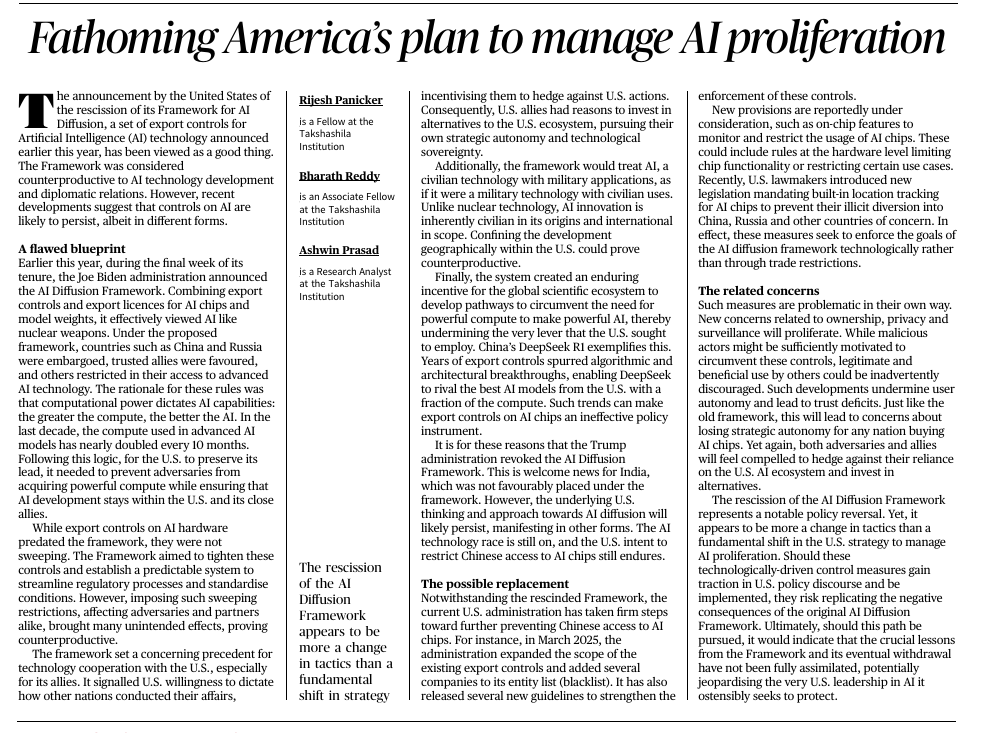1. Context: AI Diffusion Framework Rescinded
- The AI Diffusion Framework was a set of export controls on AI technologies issued by the Biden administration.
- It treated advanced AI technologies like nuclear weapons — imposing hardware export controls, especially on chips and model weights.
- This led to embargoes on countries like China and Russia, and restricted access for even U.S. allies.
2. Why the Framework Was Problematic
- It viewed AI purely through a national security lens, rather than a developmental or innovation perspective.
- The logic of the framework: the greater the computing power (compute), the better the AI — so control compute to control AI progress.
- However:
- It slowed down global collaboration.
- Hurt even trusted allies.
- Disincentivized global scientific cooperation.
- Provoked countermeasures and technological hedging by other nations.
- It slowed down global collaboration.
3. Rescission and Its Implications
- The U.S. revoked the framework earlier this year, signaling a shift — but:
- Controls still persist, just in different forms.
- S. allies remain uncertain and cautious.
- There’s a trust deficit in U.S. tech policy among partners.
- Controls still persist, just in different forms.
4. New Technological Controls Emerging
- Instead of trade restrictions, the U.S. is exploring hardware-level restrictions, such as:
- On-chip features to restrict performance or usage.
- Built-in location-tracking features to prevent illicit diversion of AI chips to adversaries.
- On-chip features to restrict performance or usage.
- This reflects continuity in control, though with different tools.
5. Concerns with the New Approach
- Still risks creating a technological iron curtain:
- Innovation slowdown for friendly countries.
- S. may lose strategic AI leadership if others decouple.
- Innovation slowdown for friendly countries.
- While it aims to prevent misuse by adversaries, it also discourages legitimate use.
- Could undermine democratic values like privacy, decentralization, and innovation.
6. Geopolitical and Strategic Implications
- Adversaries and allies alike are:
- Diversifying supply chains.
- Investing in domestic AI ecosystems.
- Trying to reduce dependence on the U.S.
- Diversifying supply chains.
- The move could backfire, accelerating technological decoupling and undermining U.S. influence.
7. Key Argument of the Editorial
- While the formal framework is gone, the mindset of control remains.
- The new approach is tactical in shift but not strategic — it still risks isolating the U.S. technologically.
- The U.S. must lead by openness and cooperation, not exclusion.
UPSC GS2/GS3-Style Questions
🔹 10-Marker (150 Words)
- What was the AI Diffusion Framework of the United States, and why was it criticized?
- Discuss how technological export controls can impact international collaboration in emerging tech sectors.


